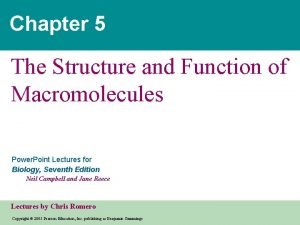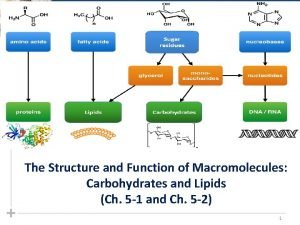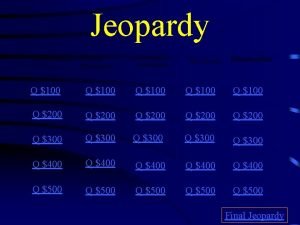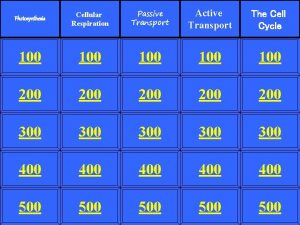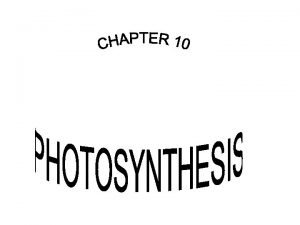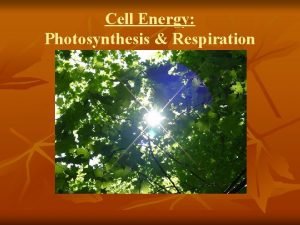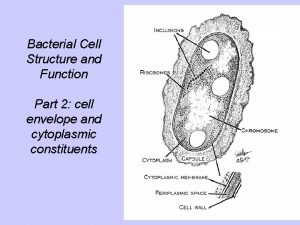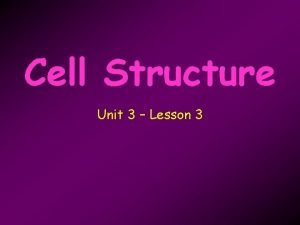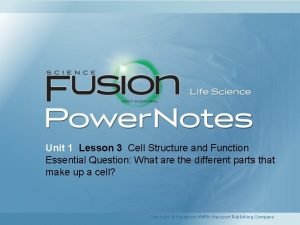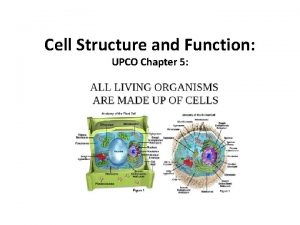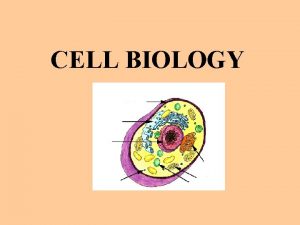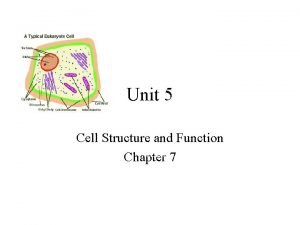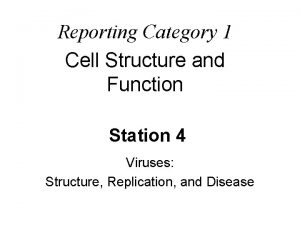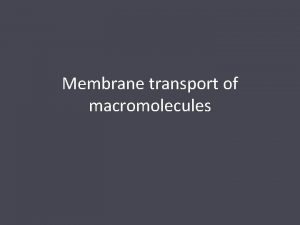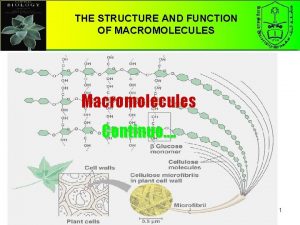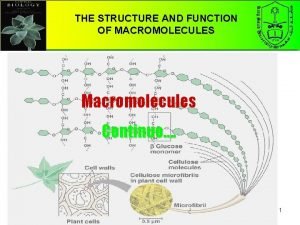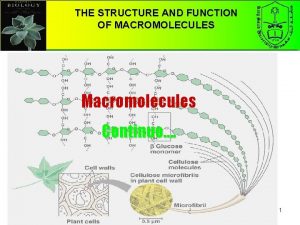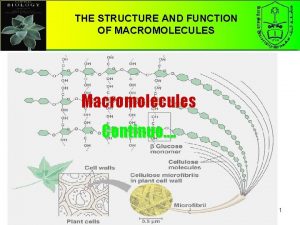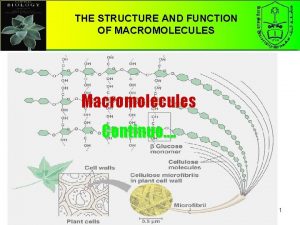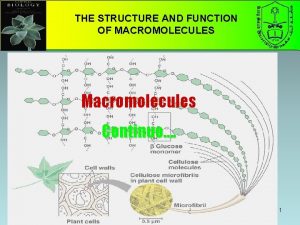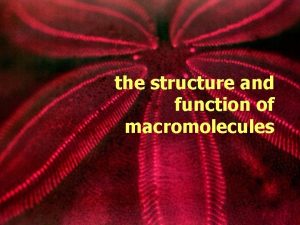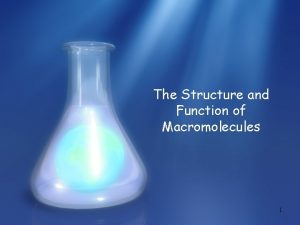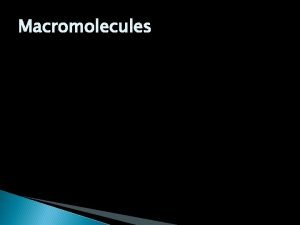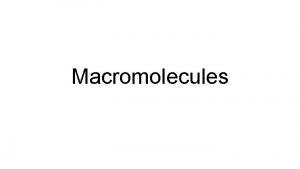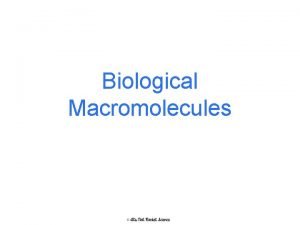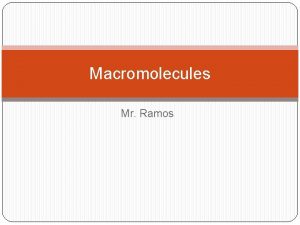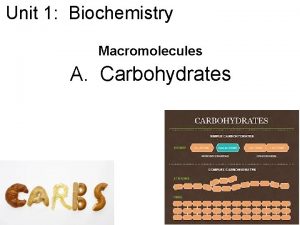Cell Structure Transport and Function Jeopardy Macromolecules Photosynthesis



























- Slides: 27

Cell Structure, Transport and Function Jeopardy Macromolecules Photosynthesis Vs. C. R. Nature of science water $100 $100 $200 $200 $300 $300 $400 $400 $500 $500 Final Jeopardy

Cell Structure, Function and Transport - $100 n There are some similarities between prokaryotic and eukaryotic cells. Which of the following structures is found in both prokaryotic and eukaryotic cells? A. lysosome B. mitochondrion C. nucleus D. ribosome n What is D?

Cell Structure, Function and Transport - $200 n n n Look at the cross section of a cell membrane of a eukaryotic cell. H+ ions are being pumped from a low concentration to a high concentration. A. active transport B. passive transport C. facilitated diffusion D. co-transport n What is A?

Cell Structure, Function and Transport - $300 Which cell structure is correctly paired with its primary function? n A. ribosome - protein synthesis n B. mitochondrion - movement n C. vacuole - cell division D. nucleus - storage of nutrients n n What is A?

Cell Structure, Function and Transport - $400 Which organelle is the site where amino acids are synthesized into proteins? n A. 1 B. 2 C. 3 n D. 4 n n What is B (rough ER)

Cell Structure, Function and Transport - $500 n Osmosis occurs when there is a different concentration of solute molecules on each side of the membrane. The drawing below shows a beaker containing a 30% salt solution and a suspended cell containing a 10% salt solution. What statement best describes the cell after 20 minutes? n A. Water will move from the cell into the beaker, resulting in a smaller cell. n B. Water will move from the beaker into the cell, resulting in a larger cell. n C. Salt will move from the cell into the beaker, resulting in a smaller cell. n D. Salt will move from the beaker into the cell, resulting in a larger cell. n What is A (hypertonic)

Macromolecules- - $100 Two of the four principle classes of organic compounds are proteins and nucleic acids. What is the relationship between proteins and nucleic acids? n A. Nucleic acids use proteins for energy B. Nucleic acids are a subset of proteins C. Proteins are long polymers of nucleic acids D. Nucleic acids contain the information to make proteins n n WHAT IS D?

Macromolecules- - $200 What is the function of macromolecule subunit below? n A. energy B. catalyst C. stores genetic information D. composes the majority of the cell membrane n n WHAT IS C?

Macromolecules- - $300 Ovalbumin is a protein found in eggs. Which of the following best describes the molecular structure of ovalbumin? n A. a group of six carbon atoms joined in a ring. B. a chain of amino acids folded and twisted into a molecule C. a set of three fatty acids attached to a molecule of glycerol D. a sequence of nitrogenous bases attached to a sugar phosphate backbone n n WHAT IS B?

Macromolecules- - $400 n n n Which of the following diagrams below is an example of a lipid? A. 1 B. 3 C. 2 D. 4 What is A.

Macromolecules- - $500 Which macromolecule is not labeled on the cell membrane above? n A. nucleotide B. lipid C. protein D. carbohydrate n n WHAT IS A?

Photosynthesis vs. C. R. - $100 How are cellular respiration and photosynthesis related, in terms of energy? n A. The energy captured in photosynthesis is used to power cellular respiration. B. The energy transformed in cellular respiration is used to power photosynthesis. C. Photosynthesis and respiration perform the same task in terms of energy transformation. n D. Energy is not involved in either photosynthesis or cellular respiration. n n WHAT IS A?

Photosynthesis vs. C. R. - $200 n The diagram below shows the relationship between photosynthesis and cellular respiration and the organelles in which they occur. n Which statement describes how photosynthesis and cellular respiration are interrelated? A. Oxygen is produced during cellular respiration and stored during photosynthesis. B. Carbon dioxide and water released by cellular respiration are used in photosynthesis. C. Photosynthesis releases the energy that is stored during the process of cellular respiration. D. Glucose is used during cellular respiration to produce food that is broken down during photosynthesis. n n WHAT IS B?

Photosynthesis vs. C. R. - $300 n A diagram representing the relationship between photosynthesis and cellular respiration is shown below. The numbered boxes in the diagram represent which of the following? A. 1 water; 2 - nitrogen B. 1 - nitrogen; 2 - oxygen C. 1 - oxygen; 2 - carbon dioxide n D. 1 - carbon dioxide; 2 – water n n n WHAT IS C?

Photosynthesis vs. C. R. - $400 Which process takes place in the presence of oxygen and produces nearly 20 times as much as ATP as glycolysis alone? n A. photosynthesis B. lactic acid fermentation n C. aerobic respiration D. alcoholic fermentation n n WHAT IS C?

Photosynthesis vs. C. R. - $500 Two different species of bacteria are examined. Scientists find that species X always produces CO 2 and H 2 O during cellular respiration. Species Y always produces ethyl alcohol and CO 2. Which conclusion can be made from these observations? n A. Only species Y is aerobic. B. Only species Y is anaerobic. C. Both species X and Y are aerobic. n D. Both species X and Y are anaerobic. n n WHAT IS B?

Nature of Science - $100 n A research group has discovered that damselflies, a type of dragonfly, are being infected by a particular type of aquatic protozoan. Both young and adult damselflies are not directly infected by the protozoan but contract the infection from the prey they eat. The graph shows the percentage of adult damselflies infected by protozoans during the summer and early fall. n n Which of the following conclusions is supported by the graph? A. Infection in embanked ponds increased during the sampling period. B. Protozoans were more common in creek-fed ponds than embanked ponds. C. Protozoans reproduce more quickly in embanked ponds than creek-fed ponds. D. Infection in creed-fed ponds remained constant throughout the sampling period. n What is A

Nature of Science - $200 n A Team of biology students performed an experiment to test the effects of four different solutions on a de-shelled, raw chicken egg. Each raw, unbroken chicken egg of the same size was placed in each of four different solutions. Twenty-four hours later the following results we obtained. n Using the data table above and your knowledge about the process of science, which solution would represent the control in this experiment? A. Solution A B. Solution B C. Solution C D. Solution D n n n What is D

Nature of Science - $300 An osmosis investigation was conducted to use chicken eggs to represent cells with semipermeable membranes. The mass of each egg was measured to determine how much water diffused into or out of the eggs. The eggs were first soaked in vinegar to dissolve the shell. Each egg was then placed in one of three different solutions for 24 hours. The table below shows the result n Based on this experiment, which of the following should be inferred about cells with semi permeable membranes? A. Substances other than water may also cross the cell membrane. B. Substances other than water may block pores in the cell membrane. C. Water enters the cell when placed in environments of high water concentration. D. Water leaves the cell when placed in environments with a low concentration of solutes n Osmosis in Cells n Solution Average Mass of Eggs Before Soaking (grams) Average Mass of Eggs After Soaking (grams) Difference in Average Mass (grams) Percent Change in Average Mass Vinegar (95% water) 71. 2 98. 6 27. 4 +38. 5 Corn Syrup (5% water) 98. 6 64. 5 34. 1 -34. 6 Distilled Water (100% water) 64. 5 105. 3 40. 8 +63. 3 what is C

Nature of Science - $400 n A Team of biology students performed an experiment to test the effects of four different solutions on a de-shelled, raw chicken egg. Each raw, unbroken chicken egg of the same size was placed in each of four different solutions. Twenty-four hours later the following results we obtained. What is the independent variable in this experiment? n A. Solution A, B & C. n B. Solution D only C. The eggs D. Mass n What is A

Nature of Science - $500 n Students at a University were split into two groups and each received a different text for a philosophy course. Once group received a traditional text book, while the other received an interactive textbook on a tablet computer. After the course, the final exam grades between the . two groups of students was compared What is IV: Type of book used in college class n What is DV: final exam grade n

Water - $100 n Water has a much higher specific heat than most other covalent compounds. What do you predict might happen if water had a low specific heat instead? A. Flooding would occur and animals would be forced to migrate B. Harmful organisms living in water would reproduce at a rapid rate C. Organisms that are sensitive to changes in temperature would die D. Plants would not have enough water to effectively carry out photosynthesis n What is C? n

Water - $200 n A florist places a bouquet of white carnations in water containing blue dye. After a time, the flowers turn blue. What process helped the carnations to change color? A. Specific heat B. Surface tension C. Cohesion and adhesion of water molecules D. Formation of covalent bonds between hydrogen and oxygen molecules n What is C? n

Water - $300 Water is often called the "universal solvent" because many substances can be dissolved in water. What property of water allows it to be such a versatile solvent? n A. purity B. polarity and cohesion C. high heat capacity D. expansion upon freezing n n What is B?

Water - $400 n Maria, after finding no cold sodas in the refrigerator, placed a can of soda in the freezer. She then proceeded to check her social networking site and forgot about the soda. Later that evening her brother went to get some ice and it was brown. Maria’s soda can had split open. What is the best explanation for what happened? A. As the water cooled, it adhered to the can, causing it to split B. When the water froze, the space between hydrogen molecules expanded C. When the water froze, it weakened the molecular bonds in the aluminum can D. As the water cooled, the surface tension of the water decreased and the can collapsed n WHAT IS B? n

Water - $500 n Water makes up approximately 60% of the human body and plays a vital role in regulating body temperature. Which property of water makes it good at regulating temperature? A. Water is a good solvent. B. Water exhibits strong cohesion. C. Water has an unusual crystalline structure. D. Water has a high capacity for heat. n WHAT IS D? n n

Final Jeopardy n Type question to appear here n Type answer to appear with a mouse-click here
 Chapter 5 the structure and function of macromolecules
Chapter 5 the structure and function of macromolecules Biomolecule building blocks
Biomolecule building blocks Photosynthesis and cellular respiration jeopardy
Photosynthesis and cellular respiration jeopardy Is photosynthesis active or passive transport
Is photosynthesis active or passive transport Electron transport in photosynthesis
Electron transport in photosynthesis Symport
Symport Membrane structures that function in active transport
Membrane structures that function in active transport Active transport diagram
Active transport diagram Cell wall function
Cell wall function Chapter 6 cell energy photosynthesis and respiration
Chapter 6 cell energy photosynthesis and respiration Bacterial cell structure and function
Bacterial cell structure and function Lesson 3 cell structure and function answer key
Lesson 3 cell structure and function answer key Cell organelle graphic organizer answer key
Cell organelle graphic organizer answer key Rough endoplasmic reticulum function
Rough endoplasmic reticulum function Lesson 3 cell structure and function answer key
Lesson 3 cell structure and function answer key Biology chapter 7 cell structure and function
Biology chapter 7 cell structure and function Chapter 7 cell structure and function section review 7-2
Chapter 7 cell structure and function section review 7-2 Cell organelles graphic organizer
Cell organelles graphic organizer Chapter 5 cell structure and function
Chapter 5 cell structure and function Plastids in plant cell
Plastids in plant cell Unit 5 cell structure and function answer key
Unit 5 cell structure and function answer key Category 1 cell structure and function
Category 1 cell structure and function Category 1 cell structure and function
Category 1 cell structure and function Stages of mitosis in onion root tip
Stages of mitosis in onion root tip Passive transport vs active transport venn diagram
Passive transport vs active transport venn diagram Active transport vs passive transport venn diagram
Active transport vs passive transport venn diagram Endocytosis vs exocytosis
Endocytosis vs exocytosis Primary active transport vs secondary active transport
Primary active transport vs secondary active transport
